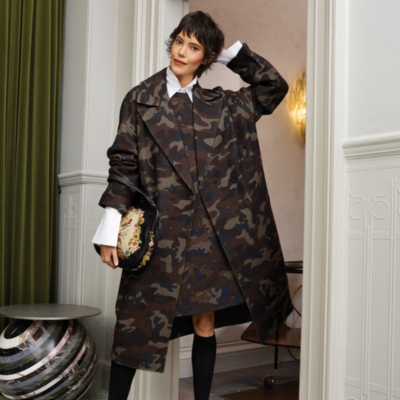Creating wardrobe order out of chaos to stay sane …
When did getting dressed get so complicated? When did it become such a ridiculously Byzantine process that there are waiting lists for handbags and people have personal shoppers and walk-in wardrobes – entire rooms just for clothes?
The answer begins with the Industrial Revolution. Before that, most people had just a couple of outfits plus their Sunday Best, and simply hung them on a hook. But once humans had figured out how to mass-produce materials and manufacture goods by machine, supply outstripped demand for the first time. Persuasion was not just the name of Jane Austen’s last novel, published in 1817. In the same era it became an actual job: advertising agencies were born to convince us to buy more stuff than we needed. And because human beings are curious and aspirational and feel comforted by possessions, we were only too happy to oblige.
More recently, fast fashion has intensified and accelerated this process to the point of obscenity: clothes for the price of a takeaway coffee, disposable as a paper cup. So we have accumulated way more stuff than we know what to do with. When the climate-action organisation WRAP conducted a survey about our clothing habits, it found that the average UK adult owns 118 garments. Even if they didn’t include underwear and socks, those of us who love clothes will blushingly admit that seems a surprisingly low number (maybe they didn’t count shoes either?). The survey also found that a quarter of those garments had not been worn for at least a year. It would be interesting to know how many of them still had the shop labels dangling from them …
Wardrobe management has, of necessity, become something of a life skill.
SEE MORE: Coping With What-To-Wear-Itis
Even for those of us who are not big shoppers, wardrobe management has of necessity become something of a life skill, in the way that pickling food for the winter or keeping your own recipe book once was. Not only do we have to hack a path through the jungle of modern fashion in an attempt to find our own personal style, we then have to find a practical way to make it work in our real lives. So we invent systems and rules to help us navigate our toomany possessions, to try to simplify our lives.
Here are some of mine. I buy monochrome and neutral-coloured clothes, and have done since I worked at Vogue when everyone wore black (which was easy, even if we did look like members of a cult … and perhaps we were). I love looking at colour and I’m super-happy in a gallery full of Impressionist or Fauvist paintings; but wearing it is a different matter. With the exception of some beachwear and summer dresses – single items which don’t have to “go” with anything else – I find that colour turns my wardrobe into an impossible jigsaw of pieces that don’t fit together. It adds a layer of difficulty I really don’t want. And if I look boring that’s a price I’m prepared to pay for freeing up some headspace.
Another rule, which I’ve only recently identified, is “feet first”: when I’m going out, I decide on my footwear before anything else. If my feet are squashed or wet or I can’t walk properly, I get grumpy and might as well have stayed at home. Boring again, yes, and not how I thought when I was younger.
I’m so over suffering to look good and the way that pain is a societally acceptable part of women’s wardrobes … but not of men’s.
SEE MORE: Do You Dress For Yourself Or Other Women?
My friend Pip rotates her clothes with the rigour of a farmer rotating crops: when the summer ones come out, the winter ones are put firmly away. Another friend turns the hanger round after she’s worn something, so that at the end of the season she can see at a glance what she has used and what she hasn’t. (I would add, on a similar note, that items always at the bottom of piles should be regarded with suspicion, because they are probably not being worn and may need rehoming.) Most of us have some kind of wardrobe system: mine is vaguely zonal for cold and hot weather clothes, evening things have their own space, and there are separate places for exercise kit and beachwear. But to you it would probably look completely random.
Whether we’re having our colours done or deciding to buy only secondhand or getting several of the same perfect T-shirt in case they stop making it (they will), we are attempting to impose order on chaos. In a time of unnatural plenty, when we are the constant targets of persuasion, if we didn’t invent systems and rules for our wardrobes they would be so overwhelming that we’d be lucky to make it out of our pyjamas in the morning.

Life, Death & Getting Dressed, How To Love Your Clothes … and Yourself (New River) is out now.
SEE MORE: Time For A Wardrobe Clearout
We may earn a commission if you buy through affiliate links on our site.










